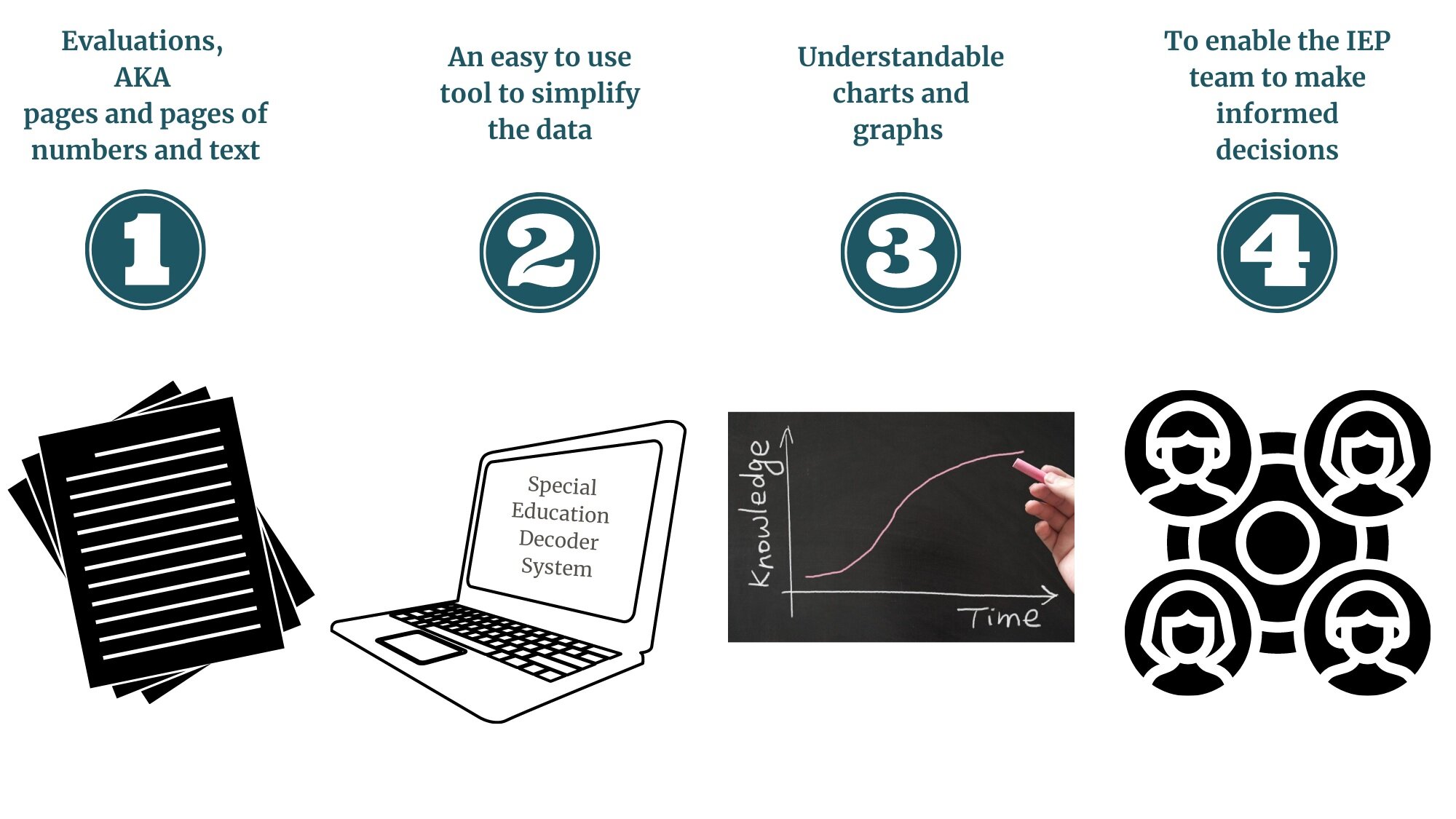
Special Education Decoder System (SEDS)
Designed to help parents and school teams make sense of school evaluations.
Problems with Evaluations and Why We Developed the SEDS
We created this program because every member of our organization (and almost every IEP team member we know) has run into these difficulties:
Psychoeducational and independent educational evaluations can hold 40 or more test scores spread across 15+ technically written, or more, pages of text. Locating key data and finding areas of need can quickly become frustrating.
Many of us have tried drawing on paper to explain to others what test scores mean–even pulling out napkins to draw bell curves. Admit it, we’ve all done it!
And, really, how many of us can easily hold 15+ pages of data in our heads? And the number of test scores can be overwhelming!
We’ve also had difficulties determining what the strengths and needs were and what was causing learning (reading, for example) to be a problem for the child.
And without making sense of the test reports how could we determine eligibility or develop needs-based IEPs?
We can help you understand this information and empower you to advocate for the services your child needs in school.
Click above to see the SEDS program in action.
The SOLUTION: Special Education Decoder System
Ever wished there was an easy way to understand all those school assessments? Well, now there is.
This video will show you how easy it is to enter test scores into the SEDS and immediately SEE your child’s strengths and needs.
The Special Education Decoder System was designed to present test scores visually so individuals or school teams can:
Immediately see the range of skills and the child’s needs and strengths,
Focus (literally zoom in or out) on one or many test scores,
Discuss and point to the relationships among the test results, and
Not only see what the areas of needs might be but learn why they might exist.
Watch the Special Education Decoder System in action!
SEDS will take you from step 1 to step 4.
Users Say That the SEDS Does What It Was Intended To Do
"This resource will prove to be a game-changer for parents and advocates. It is what we've needed for years - showing with clear visuals the strengths and weaknesses of our children. I've taken it to numerous team meetings and have had an incredibly positive response (and outcome) at each. Thank you Vaughn Lauer."
— Ann A., Parent
“The Special Education Decoder System is a great tool for your advocacy toolkit! I was able to use the graphs to show that my daughter is not the sum of her scores. The school led me to believe that they planned to deny Dyslexia services. I scheduled a meeting with the Dyslexia department and used the graph to point out her strengths and weaknesses in a clear, concise, and easy to understand manner using the Special Education Decoder System. It allowed me to show that crucial scores, although not below average, were a relative weakness when compared to her cognitive ability. By the end of the meeting, they agreed that she needed Dyslexia services and thanked me for being so proactive in fighting for my child’s needs. I highly recommend this program to ease the burden of test evaluation for both parents and advocates!”
— D.P., Parent and Advocate
“Evaluating evaluations was always time-consuming for me, looking at scores on individual tests, trying to see where they all fitted together and what they revealed about a student. Having to present this information clearly to teachers and parents in a way that was understandable was, at times, an additional challenge.Using the Special Education Decoder System has simplified all of this. It instantly provides an overall view of a student’s test scores on a bell chart, facilitating comparisons quickly and easily. This has been highly effective … and has literally changed the course of a meeting. Teachers have immediately understood a student’s challenges and issues when presented with a visual picture of strengths and needs.”
— Anne H., Parent and Advocate
"It's very exciting! It does in minutes what used to take me hours to do -- and it's all visual. Now the staff will be able to see it and say "OHHHHHH!"
— Y.C., Advocate


